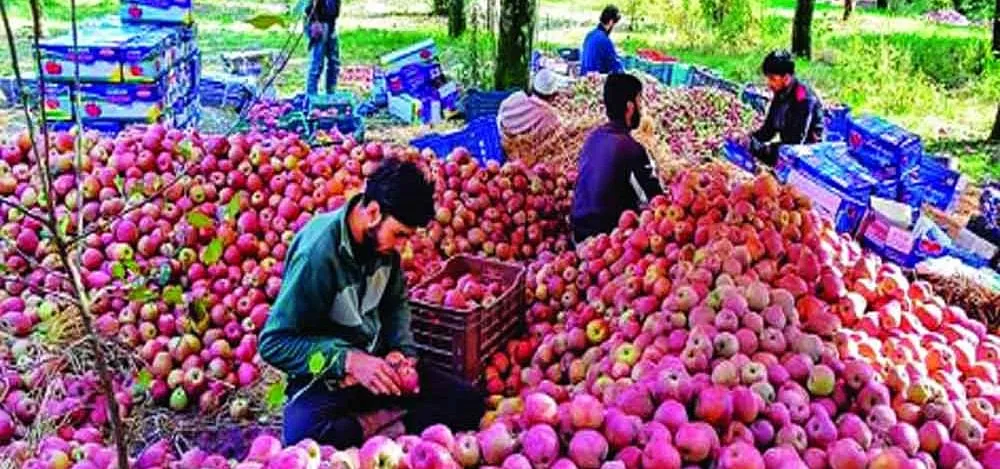The 14th-century King Zain-ul-Abidin, popularly called Budshah, was so mesmerised by the beauty of Brari Nambal lagoon in Srinagar that he constructed Hamams (steam baths) on its banks.
But little did the King – Budhshah – know that Brari Nambal will once be turned into a cesspool!
Situated at the entrance of Shaher-e-Khaas, Brari Nambal was known for crystal clear waters. It was one of the major tourist attractions in Kashmir.
Before the 1970s, Brari Nambal had two outlets, one on the west side and the other on the north from Nallah Mar. During the 1970s, Nallah Mar was earth-filled and converted into a road.
Closure of the Nallah Mar outlet started deterioration of the lagoon. Gradually, Brari Nambal’s hydrology started to affect and it lost flushing capacity.
The water body is ecologically important as it helps to regulate hydrology of Dal Lake by releasing its surplus waters into river Jhelum via a conduit at Fateh Kadal area. During the past nearly three decades, Brari Nambal has borne the brunt of official apathy and public greed. Absence of conservation measures coupled with unabated pollution and encroachments has pushed it on the verge of extinction. Major expanse of the lagoon has been swallowed by weeds and garbage dumps.
• The lagoon has been extensively encroached upon from Baba Demb side. This side has been converted into a fully-fledged market. Scavengers are openly dumping used items, plastics, steel, iron and paper vacant land on the banks of Brari Nambal.
Research conducted by Department of Environmental Science, Kashmir University states that Brari Nambal has lost over 10 hectares in the last over 40 years.
The problem has been compounded by explosive growth of macrophytes leading to decrease in spread of open water.
For nearly two decades, Greater Kashmir has been highlighting the deplorable condition of the water body.
In 2015, the Government had formulated a comprehensive project to undertake the water body’s restoration and termed it as a “litmus test”. Ironically, despite the passing of nearly eight years, no scientific measure has been undertaken to restore Brari Nambal.
Except engineering works, construction of viewing decks and walking tracks, hardly any scientific effort is being made to improve water quality. In peak summer, a pungent smell emanates from Brari Nambal engulfing adjoining areas. Instead of a landmark, the water body has become a source of inconvenience for people.
Bathymetric analysis of the water body has revealed that it is shallow with a depth ranging from 10 to 174 cm. The Carlson’s Trophic State Index (TSI) ranges from 74 to 87 indicates hypereutrophic waters. The loss of area coupled with reduction in morphometric features, low depth, and higher trophic status indicate anthropogenic pressures compromising ecological integrity of the lagoon. The hyper-eutrophic state coupled with the high density of algal blooms signify high pollution load.
Environmentalists claim that the lagoon is on the verge of extinction. Noted environmentalist Dr MRD Kundangar minces no words in saying that Brari Nambal is passing through a putrefaction process. “Due to high bacterial load by influx of sewage it is stinking due to release of hydrogen sulphide gases.”
Ajaz Rasool, a hydraulic engineer states that ornamental fencing and construction of viewing points are futile unless eco-restoration of Brari Nambal is undertaken on a scientific basis. Shahid Ahmad Dar, a research scholar who has done extensive study on Brari Nambal states that the water body has lost over 10 hectares in the last over 40 years and is embattled with extreme pollution load.
The Brari Nambal restoration project includes land acquisition, dredging, cleaning and shoreline development of the lagoon. Officials of Lake Conservation and Management Authority (LCMA) claim that delay in land acquisition is a major bottleneck in conservation of the water body. Though LCMA says it is conducting dredging and cleaning of the Brari Nambal area, there are no visible results. Water flow from Nowpora channel to Brari Nambal has to be increased.
Presence of two Sewage Treatment Plants (STPs) in the Brari Nambal lagoon makes its scientific conservation mandatory and on war-footing basis. Government must ensure that the STPs constructed on its southern banks function as per laid standards.
The lagoon shouldn’t be treated as wasteland to dump residue or untreated sewage water by these STPs. Scientific measures are needed to save ecologically fragile Brari Nambal from further pollution by sewage flow and garbage dumping.
We are losing Brari Nambal at a fast pace. Damage done so far to its eco-system is irreversible. So scientific, not cosmetic, measures are needed to save Brari Nambal.
Government must explore options to construct an outlet of Brari Nambal through Nallah Mar, which was its main outflow channel, through pipelines to Anchar lake.
This will improve circulation of its waters.
At a time when artificial lakes are being created, restoration of Brari Nambal, a natural lake, is difficult but not impossible. There is a need for comprehensive scientific policies, strong political will and importantly support of people to save our water bodies.
It is high time that the Government and people own Brari Nambal and other water bodies. Conservation of Brari Nambal can be made a model for restoration of other water bodies in Kashmir. We have to pass this litmus test of saving our natural assets and behave as responsible citizens and creations.
The author is Executive Editor, Greater Kashmir
DISCLAIMER: The views and opinions expressed in this article are the personal opinions of the author.
The facts, analysis, assumptions and perspective appearing in the article do not reflect the views of GK.







